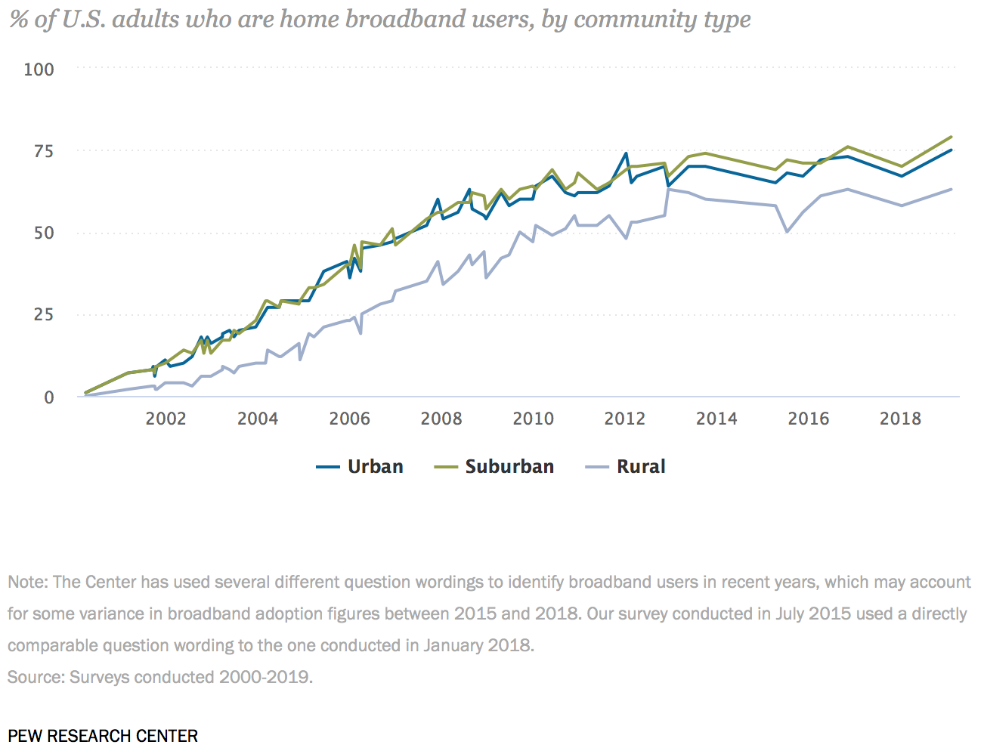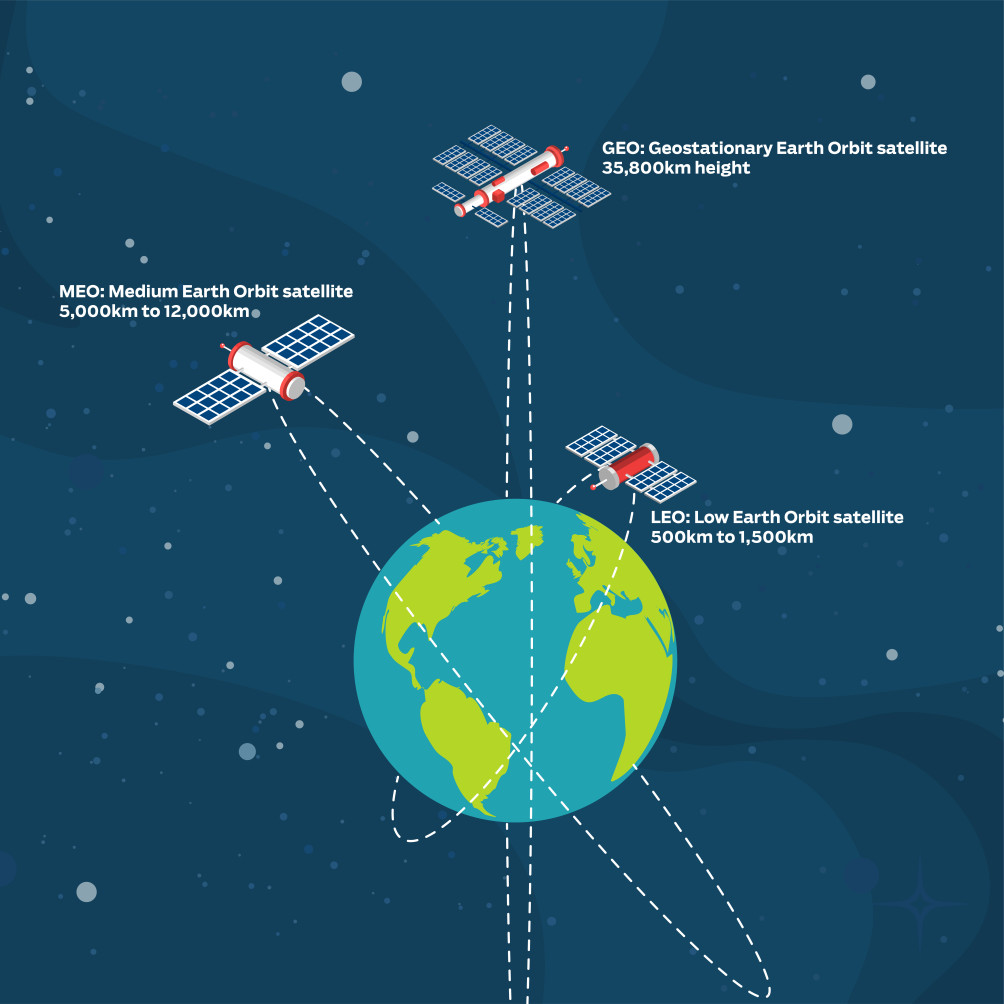SpaceX Takes First Step into Telecommunication Companies’ Turf
SpaceX, an American aerospace manufacturer that revolutionized space launch costs with reusable rockets, has recently sent its first batch of 60 satellites into low-earth orbit. This marks the first step in the company’s plan to offer high-speed internet access around the globe. The accomplishment also serves as yet another example of technological advancements spurring competition in a free-market economy, benefiting consumers around the world.
For centuries technological innovations fueled economic growth and reinforced free-market principles, from the first European printing press in 1450, to the transcontinental railroad that put the American West on the map in 1860s. Similarly, reusable rocket technology—spearheaded by SpaceX and designed to land rocket boosters back on Earth—is the key to cutting costs in exploring the “final frontier.” Who knows, maybe this will eventually lead to an establishment of a self-sustaining space industry?
But, before companies start mining the asteroids, SpaceX wants to improve connectivity here on Earth in the near term.
Like an image from a popular sci-fi novel, “The Hitchhiker’s Guide to the Galaxy” (by Douglas Adams), a long string of pearls glittered in the night sky this May. According to Federal Communications Commission’s (FCC) approvals, this first batch of internet-beaming satellites can eventually grow into a 12,000 strong “Starlink” constellation.
“The main value of Starlink is providing low-latency high-bandwidth internet access to relatively low-density areas… It will serve around three to five percent of all people in the world,” said Elon Musk, the founder of Tesla and SpaceX, during the Tesla Annual Shareholder Meeting.
It is worth noting that many of Elon Musk’s projections can be over-optimistic at times. However, unleashing the full capabilities of the Starlink constellation could be epic. Few would disagree that alternative media, capital market investments, and online education, have proven to be disruptive forces in the 21st Century. In 2018, the Internet–essential in everything from making commercial transactions to collecting and analyzing digital information–passed the four-billion users mark. But, perhaps more importantly, internet access preserves individual freedom of expression in an era of increasing connectivity and red tape.
Yet it is still seldom available in most rural and suburban areas. As many as 74% of 189 countries still can’t pass the 10 megabytes per second minimum speed standard to participate in a digital era.

Rural America, for example, has made one of the greatest strides in adopting digital technology, with 63% of rural homes now having broadband internet connection (e.g. cable, satellite, or mobile internet), up from just a third in 2007, according to Pew Research Center.

Yet substantial segments of rural America still lack the infrastructure needed for high-speed internet, with service being much slower than in urban areas. Per a 2018 survey, 24% of rural adults, compared to 13% of urban adults, said that getting access to high-speed internet is a major problem in their local community.
According to a new report from the FCC, satellite internet is good enough to bridge the “digital divide” in rural areas. However, as pointed out by Jameson Zimmer from Broadband Now, current satellite internet has a few drawbacks. Namely, these services come with limited data allowances, high price tags, and longer contracts.
The Starlink project–and initiatives from other companies like Hughes, OneWeb, and Amazon—has the potential to help rejuvenate rural communities, like certain areas of Kansas and Kentucky. By stationing these satellites in the low earth orbit (around 500-1,500 kilometers from Earth), SpaceX plans to circumvent the main pitfalls of both satellite and cable internet.

In particular, telecommunications companies with small numbers of internet satellites orbiting Earth need to position them farther away from the surface (often around 36,000 kilometers) to widen the coverage area. Increasing the distance, however, increases the time it takes for the signal to reach the earth. This points to yet another drawback that the FCC doesn’t highlight: the connectivity latency.
Per AT&T, satellite internet connections can have latency or lag in the 500–800 milliseconds (ms) range, while cable internet has latency closer to 5–70 ms range.
This gives cable internet, offered by AT&T, Verizon, Comcast, and others, a competitive edge in terms of speed. But, because of the infrastructure challenges, service is still limited in many rural and suburban areas. Google Fiber, which provides more reliable fiber optic connections, for example operates only in six high density metropolitan areas around the U.S.
By placing so many satellites closer to the surface, SpaceX wants to cut the latency to around 25-43 milliseconds. Once fully operational, the Starlink constellation can provide service up to as fast as 1 Gigabit per second per user. This is way faster than the FCC’s own minimum benchmark of 25Mbps download internet speed.
Whenever competition increases, especially in sectors with high-entry costs like telecommunication and high-speed internet, regular consumers benefit. Benefits usually come either through lower prices, improved quality, more options, or some combination of the three. Look at the example of Netscape, later Microsoft’s Internet Explorer, and the current Google Chrome browsers. Per the economist Joseph Schumpeter, competitive pressure comes from businesses with new products replacing incumbent businesses through quality improvements.
Satellite internet is only starting to take off, and the FCC is right to reinforce free-market competition in the high-speed internet market. According to Elon Musk, Starlink could generate at least 10 times the revenue that the company’s business of launching rockets could. If successful, Starlink would help millions to join the world online. This is true even if the project is just a stepping stone in the CEO’s vision of colonizing Mars: “If humanity doesn’t land on Mars in my lifetime, I would be very disappointed,” Musk says.
Anil Niraula is a policy analyst with the Pension Integrity Project at the Reason Foundation.
